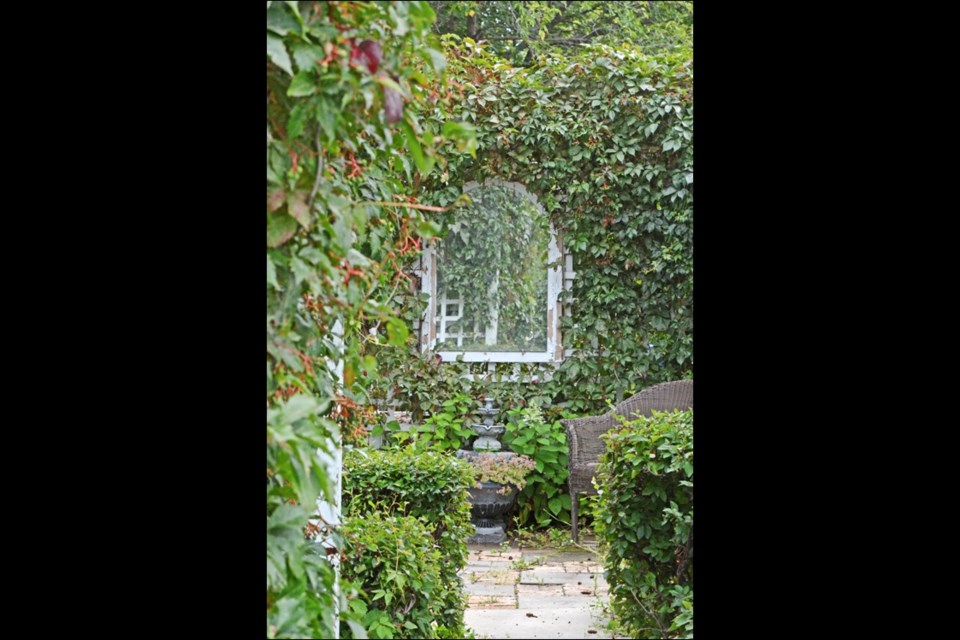“I like rustic, but I also like manicured gardens. I like hedges and foliage and I like things to be trim. I like symmetry. Because I like plants to grow naturally, but then you can kind of trim them up. Not fancy, but organized.”
Inspired in part by the great gardens of French chateaus and the country unfussiness of living in a prairie town, Allyson L’Heureux’s garden is a lesson in contradictions that somehow works.
The result of her particular taste is a succession of cohesive interconnected spaces each serving a functional purpose. The dining area leads to a sitting area that leads to the pond that leads to the produce garden and the circular fire pit area. Surrounding each defined space is a combination of trimmed hedges and trellis covered in dense vines.
The French formal gardens design philosophy defined outside space as an extension of the house, with hedges acting as walls and “alleyways” standing in for hallways separating rooms. You can see this principle echoed in L’Heureux’s yard, although it’s attenuated with her own specific taste and relatively smaller dimensions.
“Well, I love it here because there are so many little rooms, so it’s like a little adventure. I like keeping it tidy,” says L’Heureux. “It feels good when you’ve done a little weeding and everything is kind of trimmed up.”
Still, even if inspired by French formal gardens, L’Heureux doesn’t attempt to mimic the style in its most flagrant and well-known incarnation: the Gardens at Versailles. Instead, she picks and chooses elements of the design philosophy that will work in the space without all the overpowering opulence of traditional French formal design.
The reason for this blend of function with subdued formality is best represented in the symmetrical simplicity and creative use of space in the produce garden, which occupies a third of the back portion of the yard.
“(We) grow up because our space is limited, so we do companion planting,” L’Heureux says. “I planted the corn and then I planted the squash beside the corn so it could climb up it so it could share the space.”
At the produce garden’s centre is a small greenhouse, home to tomatoes and dill, which is surrounded on all sides by a path with garden around its perimeter. Symmetry is a core element of French formal gardens and one that L’Heureux employs throughout the “rooms.”
If designing a yard requires plans and consideration, then the gardening work itself is like an automatic response for L’Heureux, one that she wouldn’t think not doing.
“It’s not work to me. I don’t know if I’d call it a hobby,” she says. “It's just part of our lifestyle. I couldn’t stand living without a yard. That would be really hard for me, I need to get outside.”
While the majority of the garden is planned according to L’Heureux’s style, the produce garden is more of a passion made even more satisfying by its benefits.
“It’s just so fun and because (the fruits and vegetables) taste so good. You plant a seed and it’s amazing. It’s just so satisfying and it’s so beautiful. It’s a wonder that it does that.”
Overall, L’Heureux’s love of being outside shows through in every aspect and “little room” in her picturesque variation of French formality in the heart of the prairies.



.png;w=120;h=80;mode=crop)
